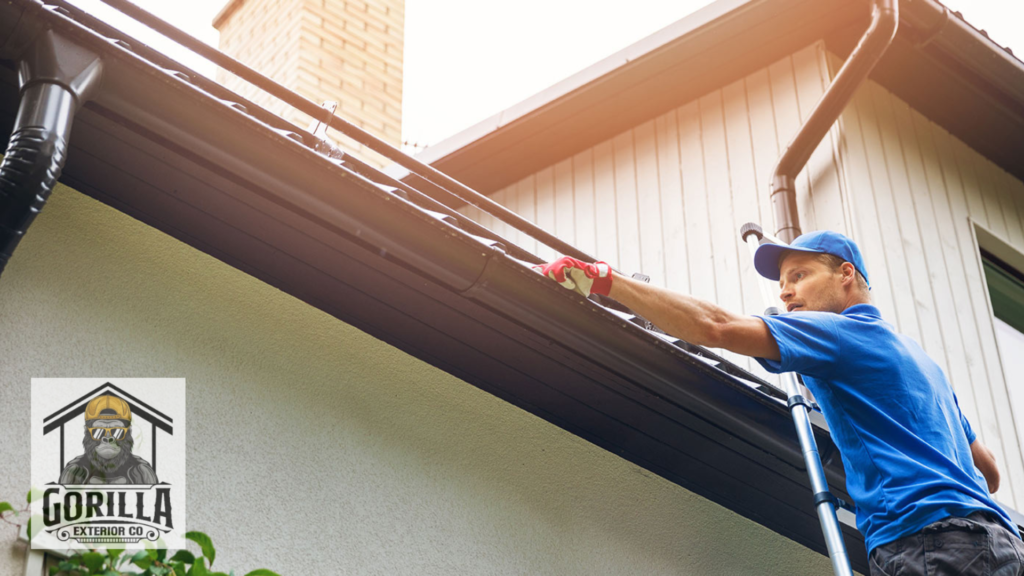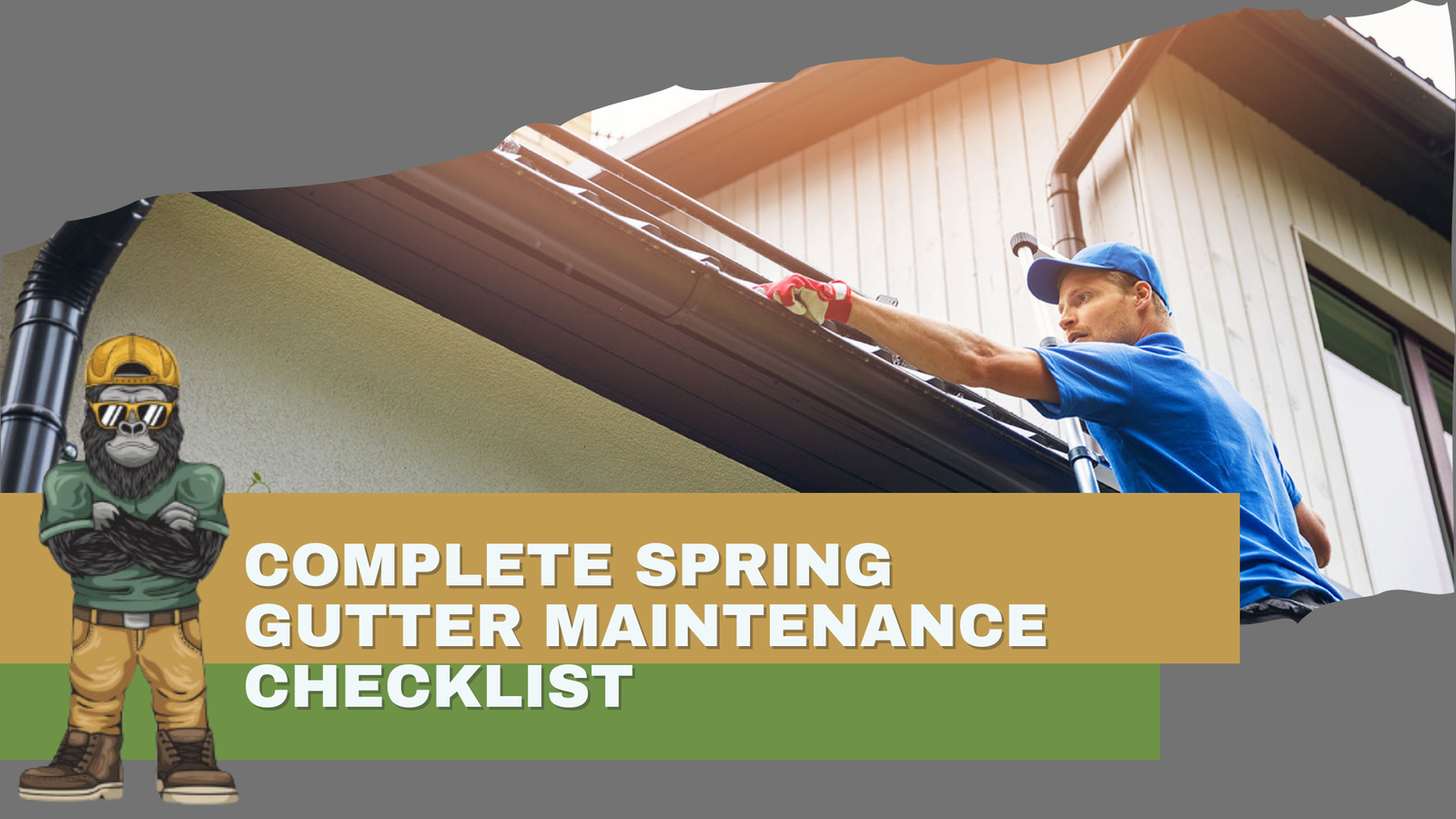Spring Cleaning: A Complete Gutter Maintenance Checklist
Why Spring Gutter Maintenance Is Essential


Spring is the ideal time to prepare gutters for heavy rain and prevent costly damage. Throughout winter, debris, leaves, and ice buildup can clog gutters, impeding water flow. Clogged gutters can cause water overflow, damaging the foundation, siding, and landscaping. A comprehensive spring gutter maintenance checklist ensures proper drainage, extends gutter lifespan, and protects your home.
Step 1: Inspect Gutters and Downspouts for Damage
Begin with a thorough inspection of all gutters and downspouts. Look for visible damage, such as:
- Cracks or holes that may cause leaks.
- Sagging gutters pulling away from the fascia.
- Loose fasteners that compromise gutter support.
- Rust spots or corrosion on metal gutters.
- Separated joints in sectional gutters.
Use a garden hose to run water through the system and observe if it drains properly. Any signs of leaks or slow drainage indicate repairs are needed before heavy spring rains arrive.
Step 2: Clean Out Debris from Gutters
Clearing out debris is essential for free-flowing gutters. Follow these best practices:
- Wear heavy-duty gloves to protect your hands.
- Use a plastic scoop or small trowel to remove leaves, twigs, and dirt.
- Collect debris in a bucket to prevent it from littering your yard.
- Flush gutters with a hose, starting at the end opposite the downspout.
- Use a plumber’s snake or a high-pressure nozzle to clear stubborn clogs in downspouts.
Consider installing gutter guards to reduce future debris buildup.
Step 3: Check for Proper Gutter Slope
Gutters must be correctly sloped to ensure water flows toward downspouts. For every 10 feet of gutter, a slope of 1/4 inch toward the downspout is recommended. Use a level to check the slope and adjust hangers if necessary. Poor slope leads to standing water, increasing the risk of rust, leaks, and mosquito breeding.
Step 4: Secure Loose Gutters and Downspouts
Loose gutters compromise the entire drainage system. Secure gutters with new brackets or screws where necessary. For downspouts:
- Ensure they are firmly attached to the house.
- Confirm they direct water at least 3-5 feet away from the foundation.
- Use downspout extenders if needed to prevent water from pooling near the home.
Step 5: Repair Leaks and Replace Damaged Sections
Leaks and damaged sections can cause significant water damage if left unchecked. Repair techniques include:
- Applying gutter sealant to small cracks and seams.
- Patching holes with metal flashing and roofing cement.
- Replacing sections with extensive rust or corrosion.
- Installing splash blocks at downspout exits to control water flow.
Step 6: Check Gutter Hangers and Spikes
Inspect hangers and spikes that secure gutters to the fascia. Over time, these components can loosen, especially after harsh winter weather. Replace or tighten them as needed to ensure the gutter system remains securely attached. Upgrading to heavy-duty gutter hangers can provide added durability.
Step 7: Ensure Proper Water Drainage
Water should flow smoothly from gutters through downspouts and away from the home’s foundation. Conduct a final water test by running a hose through the system and observing the drainage. If water pools near the home, regrade the landscape or install French drains for better drainage.
Step 8: Trim Overhanging Trees
Overhanging branches contribute significantly to gutter clogging. Trim back trees and shrubs near the roofline to reduce the amount of debris falling into gutters. This preventive step minimizes future maintenance needs and reduces the risk of damage from falling limbs.
Step 9: Install Gutter Guards for Long-Term Protection
Gutter guards significantly reduce the amount of debris entering gutters. There are various types of gutter guards, including:
- Screen guards: Affordable and easy to install.
- Mesh guards: Offer finer filtration for smaller debris.
- Reverse curve guards: Direct water into gutters while keeping debris out.
- Foam guards: Inserted into gutters to block debris.
Select gutter guards based on your home’s specific needs and surrounding environment.
Step 10: Schedule Professional Gutter Inspection
For comprehensive maintenance, schedule a professional inspection. Experts can identify hidden issues such as improper slope, subtle leaks, or potential structural damage. A professional service ensures that your gutter system performs optimally throughout the rainy season.
Seasonal Gutter Maintenance Tips
- Spring: Focus on cleaning and inspection after winter.
- Summer: Check for storm damage and ensure clear drainage.
- Fall: Remove falling leaves and install gutter guards.
- Winter: Inspect for ice dams and ensure gutters can handle snowmelt.
Common Gutter Maintenance Mistakes to Avoid
- Ignoring minor leaks: Small leaks can lead to significant water damage.
- Using metal tools for cleaning: Metal tools can damage gutter coatings.
- Skipping slope checks: Poor slope prevents proper water flow.
- Neglecting downspouts: Blocked downspouts cause water to overflow.
- Delaying repairs: Address gutter issues immediately to prevent escalation.
Benefits of Regular Gutter Maintenance
- Prevents foundation damage: Directs water away from the base of the home.
- Protects landscaping: Prevents erosion from uncontrolled water flow.
- Extends roof lifespan: Reduces moisture buildup and related damage.
- Prevents pest infestations: Clear gutters eliminate breeding grounds.
- Saves money: Reduces the need for costly repairs due to water damage.
FAQs About Spring Gutter Maintenance
1. How often should gutters be cleaned?
Gutters should be cleaned at least twice a year—in the spring and fall. However, homes surrounded by trees may require more frequent cleaning.
2. What are the best tools for gutter cleaning?
Essential tools include heavy-duty gloves, a plastic scoop, a garden hose with a spray nozzle, and a sturdy ladder. For hard-to-reach areas, a telescoping gutter cleaning wand is effective.
3. Can clogged gutters affect my home’s foundation?
Yes. Clogged gutters cause water overflow, which can pool around the foundation. Over time, this leads to cracks, erosion, and basement flooding.
4. How do I know if my gutters are sloped correctly?
Water should flow smoothly toward downspouts without pooling. Use a level to ensure a slope of at least 1/4 inch per 10 feet of gutter toward the downspout.
5. Are gutter guards worth the investment?
Yes. Gutter guards reduce debris buildup, minimize cleaning frequency, and protect against clogs. They are especially beneficial in areas with heavy tree coverage.
Conclusion
A comprehensive spring gutter maintenance routine is crucial for protecting your home from water damage. By following this complete checklist—inspecting for damage, cleaning debris, repairing leaks, and ensuring proper drainage—homeowners can maintain efficient gutter systems that stand up to spring rains. Investing time in seasonal maintenance not only prolongs the lifespan of your gutters but also safeguards your home’s foundation, roof, and landscaping for years to come.





